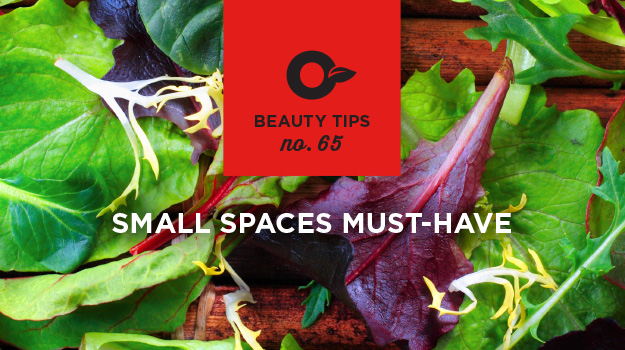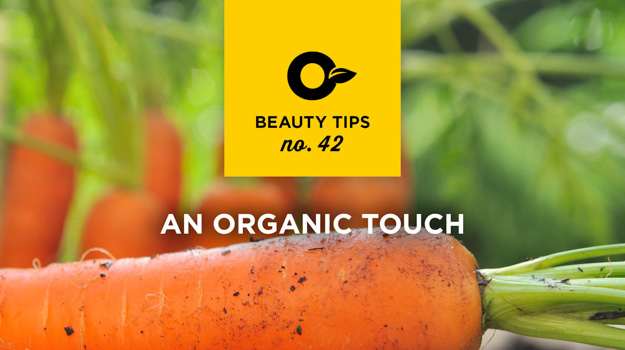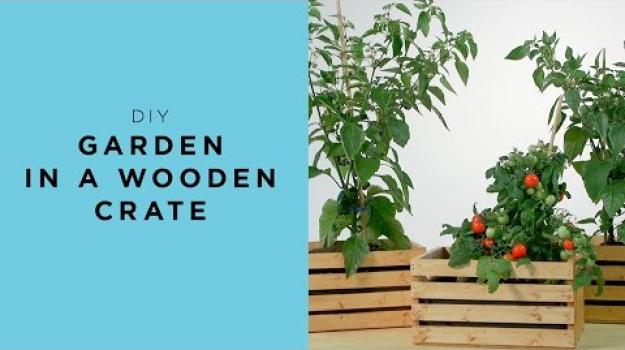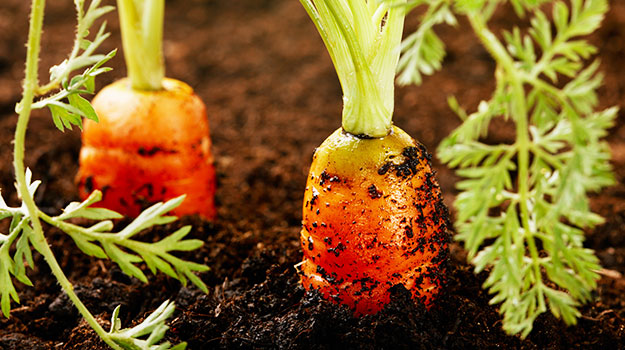
Don’t worry; carrots are super easy to grow and require minimal care.
Planting Carrots
Plant seeds directly in the garden as soon as the soil is workable in spring. Carrots are hardy, so go ahead and get them in the ground a couple of weeks before the last expected frost.
Rake out rocks and clumps to prevent deformed or lumpy carrots. Consider raised beds if your soil is badly compacted.
Carrots need well-drained, well-cultivated soil. Add a couple inches of compost or well-rotted manure, and a light application of general-purpose fertilizer before planting. Work it into the top 8 to 10 inches of soil.
Although carrots tolerate a little shade, they’ll be at their sweet, crunchy best in full sunlight.
Tips on Caring for Carrots
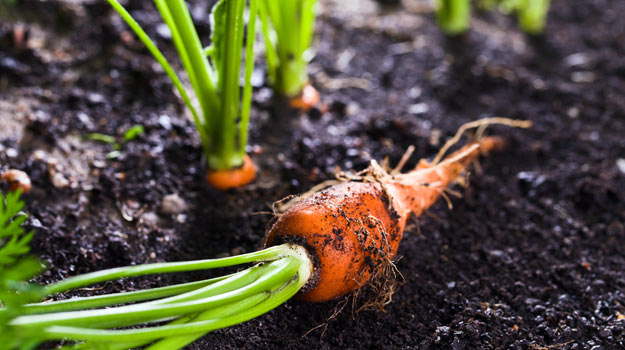
- Thin carrots to a distance of 2 inches (5 cm.) by snipping them at soil level with scissors when seedlings are about an inch or two (2.5-5 cm.) tall. Otherwise, crowded carrots are likely to be deformed and twisted. Don’t pull seedlings; you may loosen neighboring carrots.
- Soak the soil thoroughly and deeply, then let the soil dry slightly before watering again. Never allow the soil to become bone dry. Avoid shallow irrigation, which produces short, shallow carrots.
- Hoe weeds when they’re tiny by scraping the surface of the soil. Don’t wait until they’re big because they will compete with the carrots for water and nutrition. When this happens, weeds always come out ahead.
- Side-dress the carrots by sprinkling a fertilizer along the rows about two weeks after planting, then repeat with a light application when the plants are 8 to 10 inches tall (20-25 cm.). The same fertilizer you used at planting is fine.
- A layer of mulch suppresses weeds and helps keep the soil moist.
- Cover crowns of carrots with soil or mulch if they push out of the ground. Exposure to sunlight will cause the carrot tops to turn green and bitter.
Pests and Disease
Carrots are generally disease-resistant, but once disease develops, it is extremely difficult to control. Prevent disease by keeping the area clean and free of plant debris. Water carefully and avoid soggy, waterlogged soil. Plant carrots in a new location every year. Carrots may be bothered by carrot rust flies and carrot weevils. Row covers keep many pests away.
Harvesting Carrots
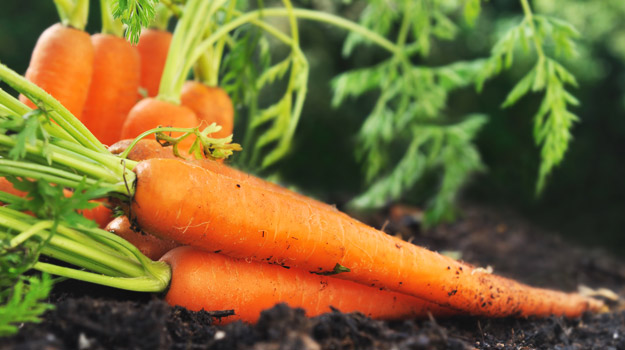
If you think harvest is near, the best way to determine readiness is to simply twist and pull a carrot out of the soil. If the soil is too hard for pulling, loosen it carefully with a spading fork.
Can I Grow Carrots in a Container?
Dwarf varieties such as ‘Nantes Half Long’ or ‘Little Finger’ are ideal for containers, or you can grow standard sizes in a deeper pot.

